Helsinki Design Week
As London starts its London Design Festival events, over in Finnish capital Helsinki, the programme has drawn to a close.
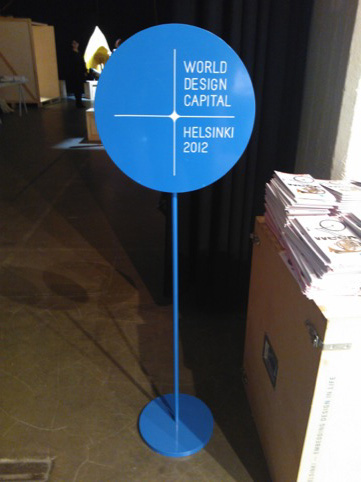
This year Helsinki Design Week has been the centrepiece of the city’s year-long World Design Capital celebrations, part of a programme that kicked off in February.
World Design Capital is a biennial title bestowed by the International Council for Industrial Design. It is both a recognition of a city’s design heritage and a platform for it to develop and promote design initiatives to benefit its citizens.
The challenge for Helsinki, as several of the WDC team tell me, hasn’t been to sell the benefits of design itself – this is, after all, a country with not just a monumental design legacy but also a current, and apparently effective, national design policy.
Instead the mission, which is crystallised in the Design Week, is to prove to both Finns and the world at large that there’s more to the nation’s design scene that the legacy of Alvar Aalto, Kaj Frank et al.
For Helsinki Design Week, this comes largely in the form of promoting young Finnish designers, showcasing the importance of innovation and co-creation in design, and developing projects to improve Helsinki’s (already very fine) urban environment.
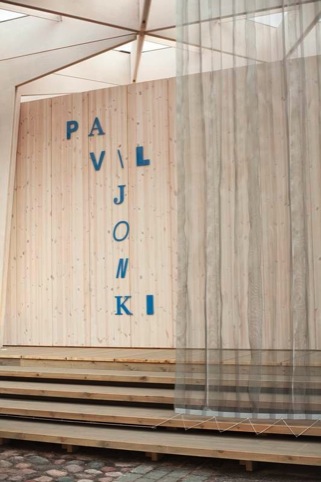
One of the WDC highlights is the temporary wooden pavilion, which opened in May, and occupies a formerly dead space between the museums of Finnish Architecture and Design in Helsinki.
Rather than being created by a Finnish design household name, the pavilion has been designed by architecture student Pyry-Pekka Kantonen, who won a competition against his fellow Aalto University students.
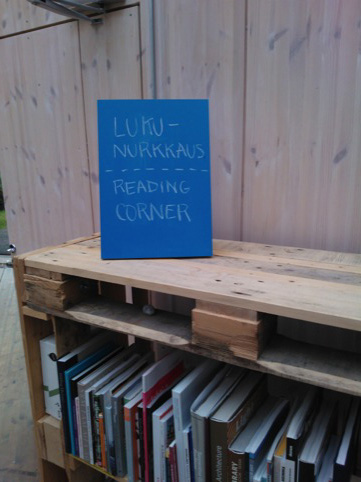
An airy, wooden structure, the pavilion operates as a community hub, offering dance events, cinema screenings, a café and a shop.
It is being taken down this week, and going into storage for potential reuse, and while there are aspirations to further develop the site, and a pavilion programme, for Helsinki Design Week, there are no concrete plans as yet.
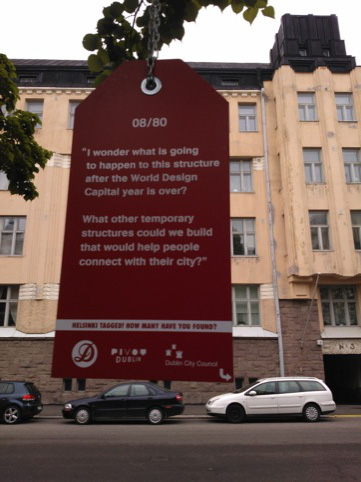
There will be two impressive permanent built legacies from the WDC programme however. The first is the Chapel of Silence, a gorgeous timber non-denominational chapel, designed by K2S Architects, an oasis of calm and contemplation in the bustling Narinkka square.
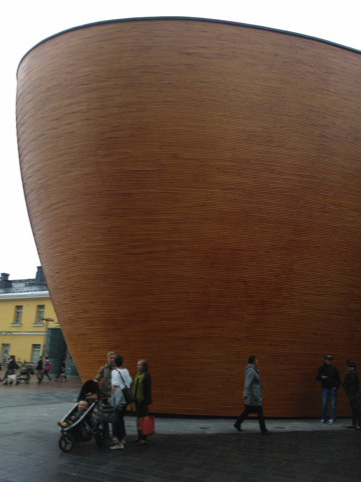
The second is Nene Tsuboi and Tuomas Toivenen’s Cultural Sauna project, opening later in the autumn, which aims to offer ‘a place for cleansing, bathing and sharing quiet togetherness’ as well as a twist on the Finnish national obsession of sauna.
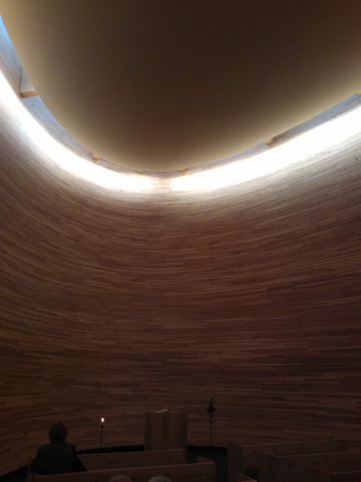
Back at Helsinki Design Week, the Everyday Discoveries exhibition, curated by Design Forum Finland and held at Suvilahti, a former power plant, features contributions from 20 countries around themes such as ‘icons’ and ‘innovation’, so that as well as design classics such as Calvert and Kinneir’s road signs and Marimekko fabrics, there is room for more groundbreaking and surreal pieces, such as this cloth ‘keyboard’ from Croatia.

Everyday Discoveries also features international exhibits such as this lovely wooden ‘see-saw’ bridge, from Norway, and the British Council’s plant roller-coaster.
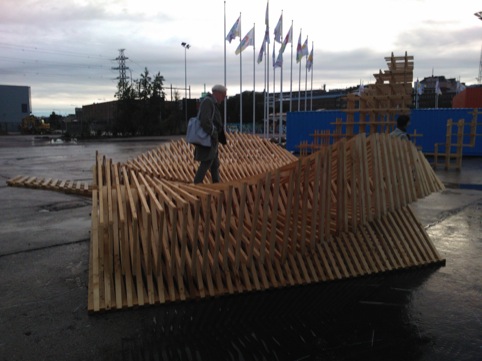
Another showcase exhibition, Co-Creating Cable Factory, held at the imposing former Nokia Cable Factory (Helsinki seems well stocked with huge, photogenic post-industrial buildings) is a slightly uncomfortable collaboration between Helsinki Design Week and Art Fair Suomi, in which artworks and design projects are exhibited side-by-side, with equal billing.
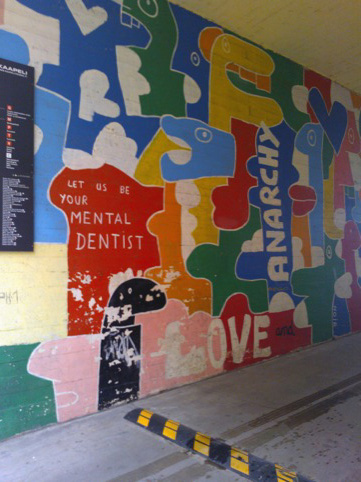
The huge space features a large number of fairly redundant, if occasionally diverting, conceptual art pieces.
The centrepiece, however, is a fantastic two-part Lego installation. Part one features an open map of the new Helsinki area of Kalasatama, with visitors encouraged to design new buildings for it.

The second part – Open the Tower – is a project developed by Danish-Icelandic architecture practice Krads and research institute The Why Factory, which tasks Aalto University students with exploring tower typologies through 100 1:500 Lego tower scale models.
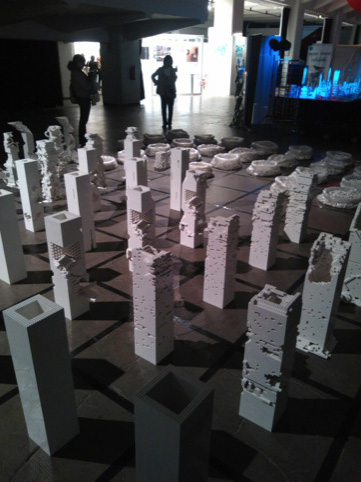
The students aren’t allowed to develop ideas in advance, but are encouraged to create designs as they build, adapt and make mistakes. The result is an other-worldly grid of mutant, morphing towers.
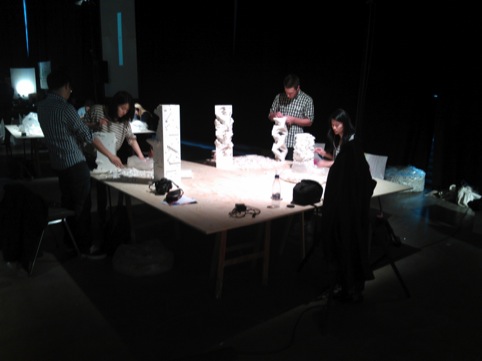
One of the key themes in Helsinki Design Week is opening up previously under-utilised city areas, and no project does this more audaciously than restaurant Muru’s ‘pop-down’ dining experience in the Tytyri limestone mine.
Developed by chef Timo Linnamäki, whose Muru restaurant was Finland’s best of the year for 2012, the project features a ‘bar’ at 350m below the surface and a ‘restaurant’ 100m down.
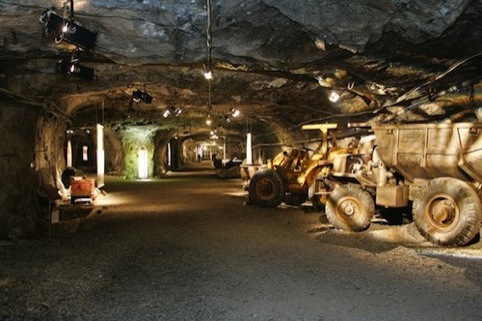
Muru Pops Down is a collaboration with lift company Kone, which uses the mine as a testing area, and diners are whisked down in Kone elevators at a brisk 6m a second.
Food, design and urban regeneration seem to go hand-in-hand in Helsinki, with other initiatives such as the Turntable Urban Garden, a bright oasis in a bleak railway yard, and the lauded Abattoir restaurant, run by Antto Melasniemi, the brains behind the Hel Yes! Restaurant concept in the 2010 LDF, as well as ‘Restaurant Days’ held four times a year, gastronomic free-for-alls, in which shop owners, galleries and even private houses open up their own temporary restaurants
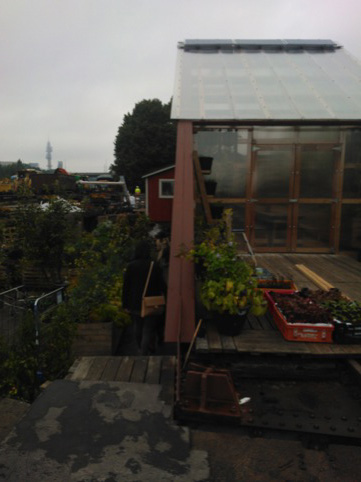
With the showcase design week now over, the WDC organisers are now turning their attention to legacy, working of a series of studies looking at how the programme has changed people’s perceptions of design both in Finland and abroad.
However, some legacies are obvious even without statistical analysis – regeneration of previously neglected urban areas, an impressive restaurant scene, and an engagement with, and encouragement of, young Finnish design talent who are looking to a bright future beyond Aalto.
-
Post a comment




